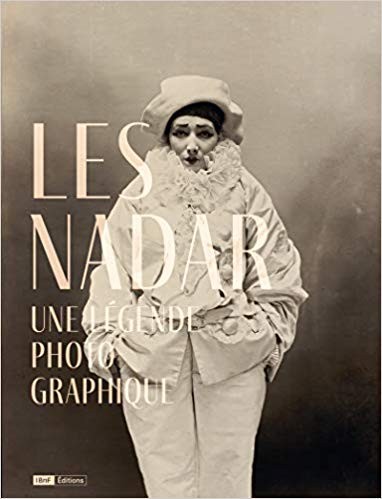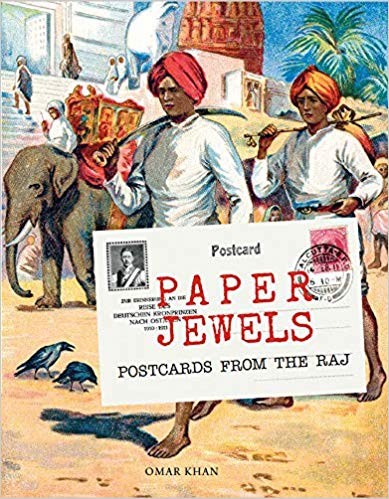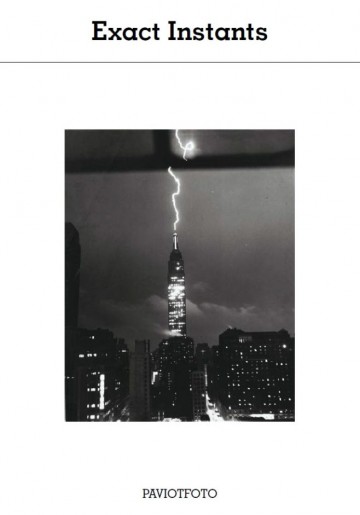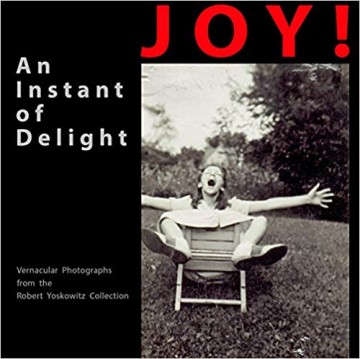AIPAD Photo Dealer and Founding Member of the Daguerreian Society Charles Schwartz Passes Away in Manhattan
Remembrances and Condolences upon Charles Schwartz's Passing
Charles Schwartz: A Personal Remembrance
Paris as Seen by Four Photographers in Online Auction on February 26th
Photo Book Reviews: From the Nadars to Postcards from the Raj, Plus Two "Instants"

LES NADAR – UNE LEGENDE PHOTOGRAPHIQUE.
BnF Editions. 352 pgs., clothbound; approximately 250 color plates. ISBN No. 978-2-7177-2782-1. Catalogue accompanying the exhibition of the same name at the Bibliotheque nationale de France, Paris. Information: http://expositions.bnf.fr/les-nadar.
This handsome exhibition catalogue–available in French--chronicles the brilliant and often extravagant Nadar clan: Felix, one of photography's early masters, his bohemian artist and photographer brother Adrien, his businessman/photographer son Paul, and Paul's ambitious daughter Marthe. As the BnF scholars make clear, the three generations kept the Nadar brand active for nearly a century, beginning with the Nadar studio's establishment in 1850 through 1948. Indeed, none of the other great mid-nineteenth- century studios outlasted World War II.
"The House of Nadar, which stayed in one family, stood out for its longevity," we learn from exhibition directors Sylvie Aubenas, Ann Lacoste and scholar Paul-Louis Robert. "The constant promoting of the Gallery of Contemporaries that Félix initiated, and the Nadars' many activities above and beyond the portrait studio allowed them to stay up to date, and from the 1920s onward, to benefit from the growing public interest in their medium and its early history. The saga came to an end in 1950, when the French state purchased the entire collection, having already made partial purchases in 1897, 1907-1908 and 1943. The price, which was higher for negatives than for prints, bore witness to the collection's potential, which was still seen as considerable at that time."
This exhibition benefits not only from the BnF collection but also from major loans from the Metropolitan Museum of Art in New York, The John Paul Getty Museum in Los Angeles, and the Musee d'Orsay. The famed portraiture of Baudelaire, Dumas, Sarah Bernhardt, Gustave Dore, Stephane Mallarme, Josephine Baker and countless other French luminaries is complemented by drawings, engravings, and excerpts from Nadar letters. The combined effect is of tremendous vitality and delight in the medium. In addition, we get to see both sides of legends, such as Bernhardt, in costume for a staged production of "Izeil" in 1894 and in her atelier, formally dressed but plainly coiffed and frankly facing the camera.
The infinite curiosity of Felix Nadar is wonderfully represented in his masterfully lit explorations of the Paris catacombs, bones and skulls layered in all their macabre glory, as well as industrial images of tunnels and various utilities, prefiguring modernism's interest in the sub-structure of architecture. Ultimately, though, it is the immediacy of the portraiture that leaps at us from these prints–the drama, humor, life and self-regard of the Nadars' subjects are captured indelibly and speak to us expressively at every turn.

PAPER JEWELS: POSTCARDS FROM THE RAJ.
By Omar Khan. Mapin Publishing/The Alkazi Collection of Photography. 362 pgs., clothbound; 519 full-color plates. ISBN No. 978-81-89995-85-0. Published in conjunction with a traveling exhibition of the same name. Information: http://www.mapinpub.com.
As San Francisco-based India photography and ephemera scholar Omar Khan–who is also an award-winning web designer--points out in introducing us to his latest labor of love and connoisseurship, "Postcards were to the people in 1900 what the Internet was to the world in 2000. Postcards can be thought of as the world's first mass transfusion of images…and the finest painters from India, Austria and Japan got involved."
"Paper Jewels" focuses on the profusion of postcards produced during what's known as the Raj–Great Britain's colonial rule of the Indian subcontinent–and includes India, Pakistan, Sri Lanka, and Burma. From the early postcards of the great Indian painter M.V. Dhurandhar, the legendary Ravi Varma Press, and the works of Austrian and German lithographers staking out the sights of what are today known as Kolkata or Mumbai, many of these images haven't been published since their initial creation.
Indeed, the rich photographic detail of old Calcutta's rivers, jetties and bridges testify to the care with which these often hand-painted halftones, collotypes and lithographs came into being. The municipal buildings of old Bombay, the images of working Indians such as cotton cleaners squatting in their sheds, of colorfully dressed Hindu women and of cultural activities–such as a 1905 postcard painted by Dhurandhar of a sitarist giving a music lesson (shades of Ravi Shakar and his impact on the Beatles, 50 years later!)–are beguiling and historically rich.
In many cases, the hand-coloring of the collotypes is remarkable in its exquisite devotion to small distinctions. Subtly toned gradations of the detailed handiwork of architectural facades and the finely designed walls of royal dwellings are matched by the vivid sky blues and verdant foliage of natural imagery. The Royal Mosque of Lahore is represented by an embossed 1905 painted card that glories in the red sandstone, while another card pays tribute to the great mosque via a finely composed 1940 black-and-white photo that affirms the accuracy of the painted version.
Such comparisons are a big part of the delight proffered by this volume, but as often happens, the human subjects most compel our view and our distant wondering. A Baluch dwarf stands strangely before us, photographed in studio by the Mullick Brothers of Quetta, as does a wizened shepherd with his sheep in the wilds of Lahore. Photos of a Maina dancing girl in Jaipur and a Jaipur Sardar, or royal horseman, are presented in golden and purple hand-painted shades by Gobindram Oodeyram.
The inventory of images is rich and worthy of the subcontinent's infinite variety, mystery and majesty–none of them more inspiring, of course, than a beautiful yet subdued 1930 drawing of India's true world saint, Mohandas Ghandi, striding in his homespun cloth with a walking stick, as produced by Kulkarni Brothers of Bijapur. Such are the joys of this bejeweled survey.

BRIEFLY NOTED:
EXACT INSTANTS is a selection of 61 photographs chosen from hundreds of prints discovered by chance over a three-year period.
The images illustrate "the history of inhumanity observed during the half-century between the end of World War I and the revolutionary Parisian month of 1968."
Published by Paviotfoto (http://www.paviotfoto.com), the slim volume includes a number of compelling black-and-white historical photos by the likes of the Associated Press and others, from shots of the liberation of Paris in 1944 to early explosions of atomic bombs.
For more information, email: info@paviotfoto.com.
More cheerful in a similarly collected vein is another slim volume, JOY! AN INSTANT OF DELIGHT, an album of "vernacular images" from Robert Yoskowitz's collection of some 400 photographs.

These images of children at play, of happy men and women posing in their leisure, while bathing at the beach or sitting for a spell at the New York World's Fair in 1939, are tonic reminders of the American spirit of optimism and adventure.
Price: $12.50. For more information, email: yoskowitz@embarqmail.com. Also, available through Amazon.
Matt Damsker is an author and critic, who has written about photography and the arts for the Los Angeles Times, Hartford Courant, Philadelphia Bulletin, Rolling Stone magazine and other publications. His book, "Rock Voices", was published in 1981 by St. Martin's Press. His essay in the book, "Marcus Doyle: Night Vision" was published in the fall of 2005. He currently reviews books for U.S.A. Today.
(Book publishers, authors and photography galleries/dealers may send review copies to us at: I Photo Central, 258 Inverness Circle, Chalfont, PA 18914. We do not guarantee that we will review all books or catalogues that we receive. Books must be aimed at photography collecting, not how-to books for photographers.)
AIPAD Photo Dealer and Founding Member of the Daguerreian Society Charles Schwartz Passes Away in Manhattan
Remembrances and Condolences upon Charles Schwartz's Passing
Charles Schwartz: A Personal Remembrance
Paris as Seen by Four Photographers in Online Auction on February 26th
Photo Book Reviews: From the Nadars to Postcards from the Raj, Plus Two "Instants"


Share This